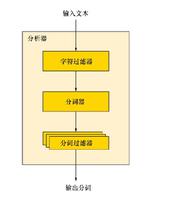ElasticSearch和Apache HttpAsyncClient
我正在尝试将ElasticSearch REST API与Java Apache
HttpAsyncClient库一起使用。我想使用持久流水线连接。这是一些测试代码(输出在注释中):
@Testpublic void testEsPipeliningClient() throws IOException, ExecutionException, InterruptedException
{
testPost(HttpAsyncClients.createDefault());
//201: {"_index":"test_index","_type":"test_type","_id":"AVIHYGnqdqqg_TAHm4ix","_version":1,"_shards":{"total":2,"successful":1,"failed":0},"created":true}
testPost(HttpAsyncClients.createPipelining());
//400: No handler found for uri [http://127.0.0.1:9200/test_index/test_type] and method [POST]
}
private void testPost(CloseableHttpAsyncClient client) throws ExecutionException, InterruptedException, IOException
{
client.start();
HttpPost request = new HttpPost("http://127.0.0.1:9200/test_index/test_type");
request.setEntity(new StringEntity("{\"some_field\": \"some_value\"}"));
Future<HttpResponse> responseFuture = client.execute(request, null);
HttpResponse response = responseFuture.get();
System.err.println(response.getStatusLine().getStatusCode() + ": " + EntityUtils.toString(response.getEntity()));
}
我不明白,为什么它可以与HttpAsyncClients.createDefault()客户端配合使用,但不能与配合使用HttpAsyncClients.createPipelining()。我也无法理解这两种创建方法之间的区别。
使用时为什么会出现错误响应createPipelining()?
我试图通过https://httpbin.org/post看到差异,但是这两个选项都显示了相同的结果。我使用默认的ElasticSearch设置。
谢谢!
我尝试了具有相同结果的PUTdocument(PUT http://127.0.0.1/test_index/test_type/<doc
id>)请求-可以正常使用,createDefault()但用createPipelining()-时找不到类似的错误-
没有找到处理程序<…>。
但是,当我尝试执行创建索引(PUT http://127.0.0.1/<index name>)的请求时,出现了另一个错误。请参见下面的代码:
@Testpublic void testEsPipeliningClient() throws IOException, ExecutionException, InterruptedException
{
testCreateIndex(HttpAsyncClients.createDefault());
//200: {"acknowledged":true}
testCreateIndex(HttpAsyncClients.createPipelining());
//400: {"error":{"root_cause":[{"type":"mapper_parsing_exception","reason":"failed to parse, document is empty"}],"type":"mapper_parsing_exception","reason":"failed to parse, document is empty"},"status":400}
}
private void testCreateIndex(CloseableHttpAsyncClient client) throws ExecutionException, InterruptedException, IOException
{
client.start();
HttpPut request = new HttpPut("http://127.0.0.1:9200/" + RandomStringUtils.randomAlphabetic(8).toLowerCase());
Future<HttpResponse> responseFuture = client.execute(request, null);
HttpResponse response = responseFuture.get();
System.err.println(response.getStatusLine().getStatusCode() + ": " + EntityUtils.toString(response.getEntity()));
}
正如我在此文档页面上所见,ElasticSearch默认支持HTTP流水线。也许我需要更改ES设置吗?
以下是具有不同日志记录设置的 部分中的一些代码代码日志:
Dorg.apache.commons.logging.simplelog.log.org.apache.http=DEBUG -Dorg.apache.commons.logging.simplelog.log.org.apache.http.wire=INFOhttp://pastebin.com/v29uvgbj
-Dorg.apache.commons.logging.simplelog.log.org.apache.http.impl.conn=DEBUG -Dorg.apache.commons.logging.simplelog.log.org.apache.http.impl.client=DEBUG -Dorg.apache.commons.logging.simplelog.log.org.apache.http.client=DEBUG -Dorg.apache.commons.logging.simplelog.log.org.apache.http.wire=DEBUGhttp://pastebin.com/G9ij15d6
我只是尝试用createMinimal()替换createDefault(),它引起了与createPipelining()相同的错误。任何想法在MinimalHttpAsyncClient中可能导致此问题?也许有一种方法可以手动创建管道客户端(带有构建器类)而不会出现此问题?
回答:
服务器必须在请求行中阻塞绝对请求URI
[DEBUG] wire - http-outgoing-1 >> "PUT http://127.0.0.1:9200/ydiwdsid HTTP/1.1[\r][\n]"流水线模式下的HttpAsyncClient使用最少的协议处理链。它不会尝试重写请求对象的请求URI。
对于您的特殊情况,请求管道似乎没有多大意义。更不用说除非您要批量提交请求,否则您甚至都不会使用流水线执行。
以上是 ElasticSearch和Apache HttpAsyncClient 的全部内容, 来源链接: utcz.com/qa/421513.html






